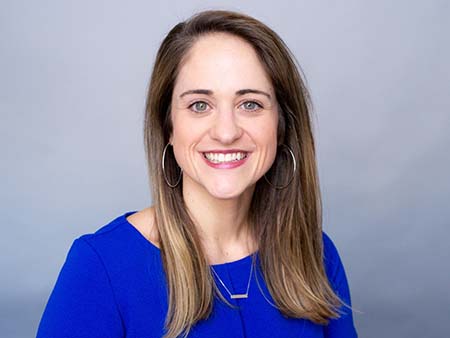Media contact: Adam Pope
 Jessica Grayson, M.D., assistant professor in the UAB Department of OtolaryngologyChronic rhinosinusitis affects 12 percent of Americans, according to the Centers for Disease Control and Prevention. Prior research defines CRS as a sinus disease with or without non-cancerous growths that line nasal passages, known as polyps. Now new research from the University of Alabama at Birmingham, in collaboration with rhinologists across the world, has determined that description is no longer adequate to characterize a patient’s disease.
Jessica Grayson, M.D., assistant professor in the UAB Department of OtolaryngologyChronic rhinosinusitis affects 12 percent of Americans, according to the Centers for Disease Control and Prevention. Prior research defines CRS as a sinus disease with or without non-cancerous growths that line nasal passages, known as polyps. Now new research from the University of Alabama at Birmingham, in collaboration with rhinologists across the world, has determined that description is no longer adequate to characterize a patient’s disease.
“We have to look beyond the presence or absence of polyps, to determine the best treatment course and the likelihood of response to normal management of sinus disease, which may incorporate surgery, antibiotics, nasal irrigations, topical steroids, oral steroids and/or biologics,” said Jessica Grayson, M.D., assistant professor in the UAB Department of Otolaryngology.
Grayson and colleagues recently published a paper in JAMA Otolaryngology Head/Neck Surgery to start discussions about how to best classify sinus disease to get the best outcomes. CRS broadly describes many different sinonasal conditions. Research suggests categorizing sinus conditions by inflammatory subtypes of CRS can lead to improved delivery and effectiveness of treatment.
“Improvement in these classifications will allow us quicker, appropriate management for patients to get maximum benefit, as well as allow us to analyze apples to apples in research and clear the muddy water of the all-encompassing term ‘chronic rhinosinusitis,’” Grayson said.
Research continues to further define the subtypes of CRS into phenotypes and endotypes.
“Future studies on endotyping — which can help in the phenotypic classification of these diseases — are underway with many rhinologists and immunologists around the world, and these conversations are ongoing via the European Position Paper and International Consensus in Allergy and Rhinology groups to continue to improve care for our patients,” Grayson said.